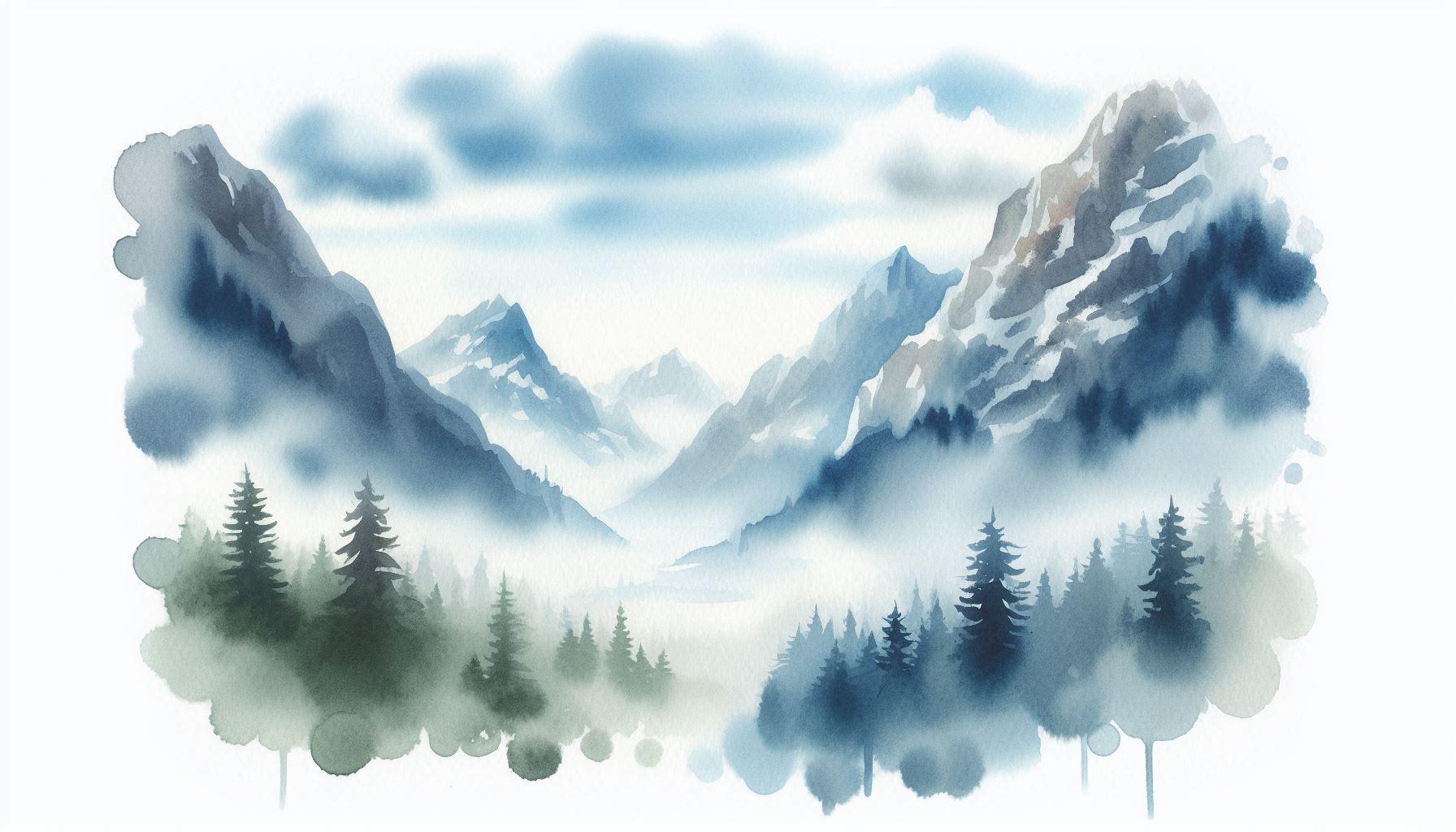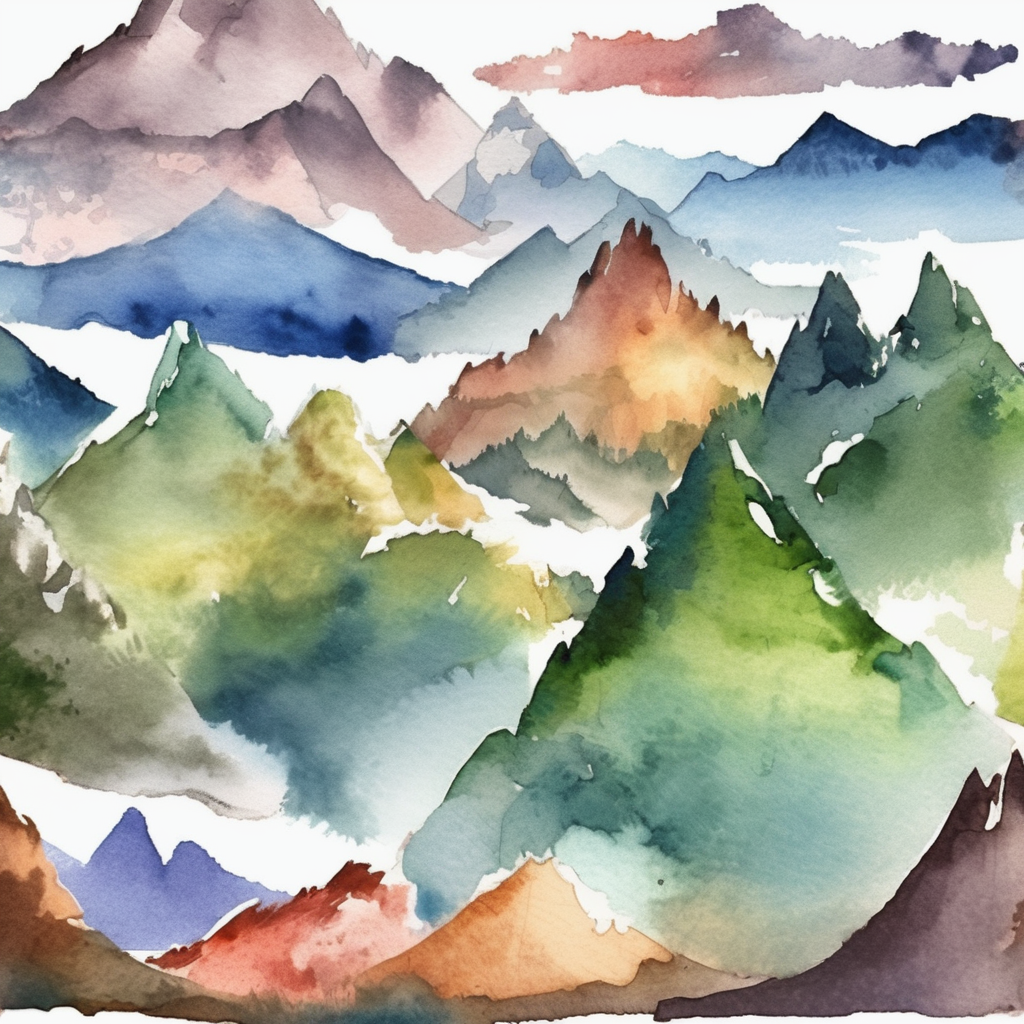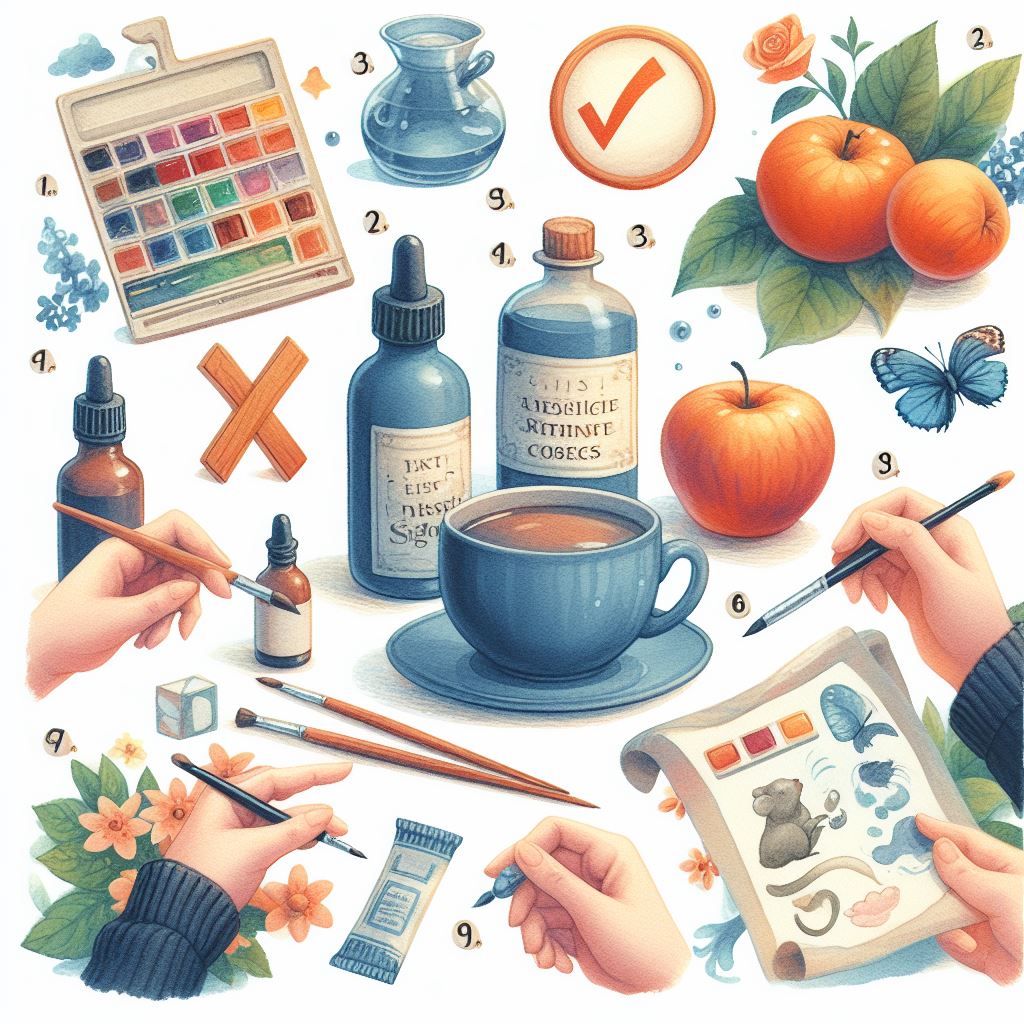Ah, watercolor pencils – the perfect blend of the precision of pencils and the vibrancy of watercolors! If you’ve ever wondered how to unleash their full potential, you’ve come to the right place. Get ready to embark on a journey of creative discovery with these versatile tools.

The Allure of Watercolor Pencils
At first glance, watercolor pencils may seem like ordinary colored pencils. But once you add water to the mix, the magic unfolds! The pigments transform into rich, blendable hues, allowing you to create stunning watercolor effects with the control of a pencil.

But what’s the big deal, you ask? Well, watercolor pencils offer a unique advantage: you can start with dry, precise lines and then introduce water to create mesmerizing washes and blends. This flexibility makes them perfect for everything from detailed illustrations to loose, expressive paintings.
Getting Started: The Essentials
Before we dive into the techniques, let’s cover the basics. To get the most out of your watercolor pencils, you’ll need:
- A high-quality set of watercolor pencils (investing in a good set will save you frustration down the line!)
- Watercolor paper (the texture and absorbency are crucial)
- A brush (for applying water and blending)
- A water container (a simple jar or cup will do)
- A paper towel or rag (for lifting and blending colors)
“Creativity takes courage.” – Henri Matisse
With these essentials in hand, you’re ready to embark on your watercolor pencil adventure!
Art of Water Pencils: Techniques to Master
Now, let’s explore some tried-and-true techniques that will take your watercolor pencil game to new heights:
1. Dry Drawing
Start by using your watercolor pencils like regular colored pencils. Lay down dry colors and layer them to create depth and dimension. This is a great way to establish the foundation of your artwork before adding water.
PRO TIP: Use a light touch and build up colors gradually for the best results.
2. Wet on Dry
Once you’ve laid down your dry pencil work, it’s time to introduce water! Use a damp brush to activate the pigments and create vibrant washes of color. This technique is perfect for creating soft, blended backgrounds or adding depth to your subject.
3. Dry on Wet
Flip the script and try drawing with your watercolor pencils directly onto a wet surface! This produces a beautiful, fluid effect that’s perfect for capturing the essence of flowing water, misty landscapes, or abstract designs.
PRO TIP: Experiment with different levels of wetness on your paper to achieve various effects.
4. Lifting and Blending
One of the true joys of watercolor pencils is the ability to lift and blend colors. Use a damp brush or paper towel to lift pigments from the paper, creating soft edges and gradients. You can also blend colors together while they’re still wet for a seamless, ethereal effect.

5. Layering and Glazing
Just like with traditional watercolors, you can layer and glaze colors with watercolor pencils. Start with lighter colors and gradually build up layers of darker hues, allowing each layer to dry before adding the next. This technique creates depth and luminosity that will make your artwork truly shine!
PRO TIP: Don't be afraid to experiment! Watercolor pencils are incredibly forgiving, allowing you to lift, blend, and rework your colors until you achieve the desired effect.
Unleash Your Creativity!
Now that you’ve learned the techniques, it’s time to let your imagination run wild! Watercolor pencils are incredibly versatile, allowing you to create everything from realistic botanicals to abstract expressionist pieces.
Follow in the Footsteps!
- Gary Greene: Known for his beautiful watercolor pencil work, Gary Greene has instructional materials available on YouTube, ArtistsNetwork, Amazon, and probably elsewhere. He does both colored pencil and watercolor pencil work, and his techniques involve melting and layering colors to achieve a range of effects.
- Liz Steel: An artist who uses watercolor pencils in her Australian bush scenes, Liz Steel shares her favorite green watercolor pencils on her blog. She is known for her expressive and vibrant use of color.
- Netta: A watercolor pencil artist known for her beautiful botanicals, Netta’s work showcases the versatility of watercolor pencils in capturing delicate details and textures.
- Kristy Kutch: A watercolor and dry colored pencil artist, Kristy Kutch has written books and teaches. Her work often features detailed and precise drawings that she later paints over with watercolors.
- David Hockney: An English painter, printmaker, and stage designer, David Hockney is known for his use of watercolor pencils. He often uses them to create detailed and precise drawings that he later paints over with watercolors.
- John Everett Millais: An English painter and illustrator, John Everett Millais often used watercolor pencils to create detailed and precise drawings that he later painted over with watercolors.
- Henri Matisse: A French painter, printmaker, and sculptor, Henri Matisse was known for his use of watercolor pencils. He often used them to create preliminary sketches for his paintings, as well as finished works of art.
- Paul Klee: A Swiss-German artist, Paul Klee was known for his use of watercolor pencils. He often used them to create detailed and expressive drawings that combined elements of abstraction and realism.
- John Singer Sargent: An American portrait painter, John Singer Sargent was known for his skill in watercolor painting. He often used watercolor pencils to create detailed and precise drawings that he could later paint over with watercolors.
- Thomas Gainsborough: An English painter, Thomas Gainsborough is famous for his portrait “The Blue Boy,” which was created using watercolor pencils.
These artists showcase the versatility and expressiveness of watercolor pencils in their work, from botanicals to portraits and landscapes.
So, what are you waiting for? Grab your pencils, a cup of water, and start exploring the boundless possibilities of watercolor pencils! Remember, the key to mastering any artistic medium is practice, patience, and a willingness to experiment. More Tips and Tricks with Watercolor Pencils here
Share your watercolor pencil creations with us on social media using the hashtag #WatercolorPencilMasters – we can’t wait to see what you create! And if you have any questions or tips to share, drop them in the comments below. Happy creating!


